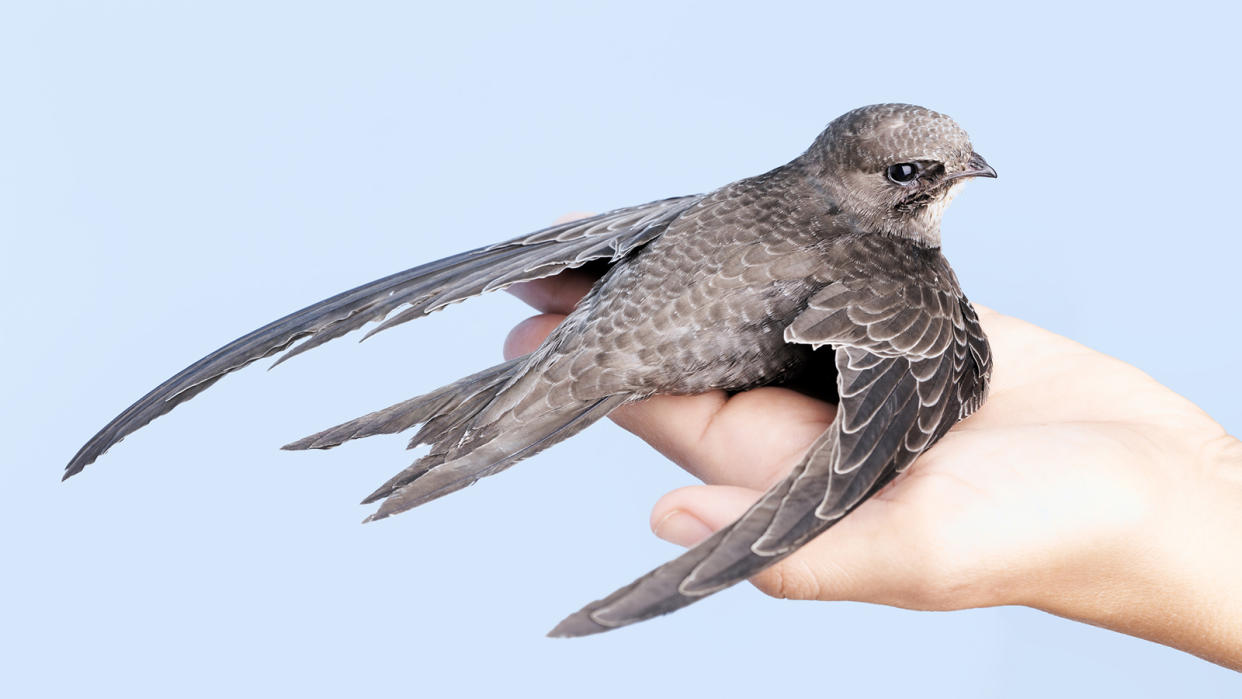This Tiny Swift Bird Can Fly for 10 Months Without Landing

Can you do anything for 10 months straight without stopping? No, humans aren't set up for that sort of thing. But when it comes to endurance, the swift bird takes the crown. Biologists have discovered that a little bird called the common swift (Apus apus) can fly for 10 months straight without landing.
Using a new type of data logger that detects both light and the movement of the birds, a study from Lund University in Sweden discovered that while some individuals might land occasionally for brief periods, most remain airborne for their entire 10-month migration period, landing only for their two-month breeding season.
"This discovery significantly pushes the boundaries for what we know about animal physiology. A ten-month flight phase is the longest we know of any bird species — it's a record", says Dr. Anders Hedenström, a Lund University biologist.
Can Other Birds Fly Such Long Distances?
Many birds can fly long distances. The wandering albatross, for instance, can travel 10,000 miles (16,090 kilometers) without flapping its wings even once. And researchers have determined that hummingbirds can fly 29 million times the length of their own body without stopping.
What's mystifying about the common swift, though, is that its flight requires almost constant wing-flapping, making its grueling migratory habits even more of a physiological mystery than that of a soaring bird like the albatross, which is basically a big hang glider.
When do the swifts sleep? Do they sleep? How could they possibly eat enough to stay so active for so long? What is their deal?!
How Swifts Maintain Their Endurance
The researchers don't have answers to any of these questions yet. They found that the birds that never landed a single time in the 10-month period had molted all of their flight feathers and had grown new ones, whereas the birds that landed occasionally didn't molt their wing feathers.
Still, there is a small, seemingly insignificant difference in flight time between those that rested and those that didn't: Of the 13 birds wearing data loggers, even the individuals that occasionally took a load off stayed on the wing 99.5 percent of the time during the 10-month period.
"Whether they moult or not could indicate small differences in their general condition or burden of parasites," says Hedenström, "and explain the flight behaviour of individual birds within the species."
Where Swifts Live and Migrate
Swifts are remarkably adaptable when it comes to choosing their homes. Traditionally, swifts nested in hollow trees, but as these habitats have become less common, they’ve turned to urban environments.
You can find them nesting in old wells and air shafts. Chimneys and buildings offer the vertical surfaces that swifts need for nesting, particularly for the common swift's aptly named relative (the chimney swift).
As long-distance migrants, each swift bird spends the winter months in warmer climates. Swifts range in terms of where they call home during this period; you'll find some in eastern Peru and other parts of the Amazon Basin in South America, while others make their way to Eurasia and Southern Africa.
Their breeding season kicks off in June or July, with each breeding pair building a nest and raising their young in it.
How to Spot a Swift
Different swift species ultimately land in different places. While the long-flying common swifts are rarely found in North America, you can see chimney swifts arrive in New England every spring — perfectly timed with the emergence of flying insects, their primary food source.
Chimney swifts nest in a variety of nest sites, including vertical walls of chimneys and buildings. These adaptable birds have a wide range, spanning across temperate regions and into the tropics. Swifts spend much of their time in the air, feeding on flying insects and displaying impressive aerial acrobatics.
Within their habitat, they coexist with numerous species of birds, each contributing to the rich biodiversity of their ecosystem.
Often described as "a flying cigar," swifts have short bodies and long, narrow wings. Their sooty, gray color and high-pitched voice are distinctive, though they can sometimes be mistaken for bats. With a wingspan of 12 to 13 inches (30 to 33 cm), their wings are slightly curved, perfect for their level flight and rapid maneuvers in the sky.
Keeping Swifts Safe
Despite their adaptability, swifts are facing challenges. Like other aerial insectivores, they are experiencing population declines, possibly due to climate change and habitat destruction. The decline in flying insects, crucial for their diet, is a significant concern.
Organizations like Mass Audubon are at the forefront of conservation efforts. Through scientific monitoring, habitat conservation and education, they strive to protect these amazing birds. You can help by installing a swift nesting tower or specially designed nestbox in your area, providing safe nesting sites for these birds.
Now That's Interesting
While the common swift holds the record for the longest continuous flight, other birds have their own unique talents. For instance, hummingbirds can fly backwards!
Original article: This Tiny Swift Bird Can Fly for 10 Months Without Landing
Copyright © 2024 HowStuffWorks, a division of InfoSpace Holdings, LLC, a System1 Company


